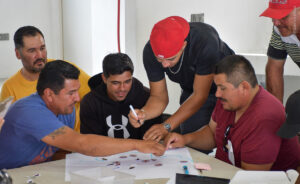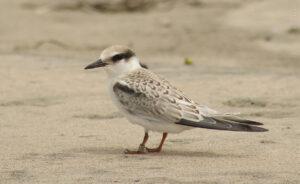Environmental restoration projects are among our great prides. Seeing wildlife flourish in ecosystems that have long suffered ecological deterioration is both amazing and encouraging. One example is the restoration project of the artificial wetland at the Cucapah Water Treatment Plant (WTP).
Located near Ejido La Grullita, 5.5 km south of San Luis Río Colorado, Sonora, this treatment plant is the largest in the city. It covers an area of 25 hectares, and is operated by the Water, Sewerage and Sanitation Operator of San Luis Río Colorado. All the water collected from the sewer system is treated with biological and natural techniques.
The Cucapah WTP is capable of receiving an influent of 600 Lt/Sec, for an annual volume of 10.2 million m3 of treated wastewater. Thus, the water is recharged to the aquifers as it is extracted from the city’s supply wells.
In addition to the high-impact benefits for the population and the industry in northern Sonora and Baja California, shallow water in the site favors the proliferation of native plants such as Tule (Typa dominguensis), Coquillo (Cyperus esculentus L.), Manso Grass (Anemopsis californica), as well as trees such as Willow (Salix goddingii), Poplar (Populos fremontii), Sweet Mesquite (Prosopis glandulosa) and Palo Verde (Parkinsonia florida). This constitutes an artificial wetland that provides shelter and food for 115 species of local fauna and more than 12,000 individuals recorded in the area, mainly ducks, gulls and shorebirds.
Restoration through artificial wetlands involves a series of preliminary tasks, such as designing and delimiting the polygon, leveling the soil, and producing the native plants that will be planted in the site. Our management work began in 2018 along with the authorities of San Luis Río Colorado, to raise awareness on how treated water could be used for environmental purposes.
After years of hard work, we managed to enable an area of 9.74 hectares of lagoon habitat, which is receiving the treated water discharge. We also carried out maintenance activities in the restored area and weed control of invasive plants. In addition, when migratory birds arrive to the Colorado River Delta, our experts carry out biological monitoring of these species within the framework of international cooperation to track birds coming from North America.
In short, our team has planted 6,529 native plants at the Cucapah WTP to restore diverse habitats that host wildlife:
- Lagoon habitat 9.74 Ha.
- Marsh habitat 0.52 Ha.
- Riparian Forest habitat 0.01 Ha.
- Mesquite Forest habitat 6.39 Ha.
- High Terrace habitat 3.27 Ha.
Please collaborate with us to replicate this successful model in other sites in northwestern Mexico.
















